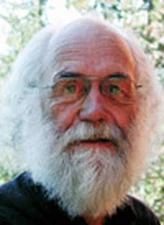Claus Fröhlich

The 2005 Julius Bartels Medal is awarded to Claus Fröhlich for his outstanding work on solar radiation and its influence on the terrestrial atmosphere and climate.
Claus Fröhlich and his team at PMOD/WRC have been pioneers in research of solar radiation, its variations and impact upon the atmosphere and climate.
PMOD/WRC provides the world standard for global radiation, against which regional centers calibrate their instruments. As World Radiation Center PMOD is obliged to maintain and continuously improve absolute radiometers. Instruments developed at PMOD/WRC are among the most precise and stable ones. Besides developing and maintaining highly precise absolute radiometers, PMOD/WRC is, since 1996,the World Optical Depth Research and Calibration Center, too. For this purpose a 4-channel filter radiometer was developed, which serves for monitoring atmospheric turbidity, in a network of presently 12 stations.
In addition, Claus Fröhlich and his team have been pioneers in UV radiation research and monitoring, as well as research on infrared radiation. PMOD/WRC presently operates a network of 11 highly precise infrared radiometers working over a high profile between 370 m and 3580 m altitude, enabling to quantify the height dependance of the radiation budget, with the goal of quantitatively proving the variation of the Earth’s greenhouse effect.
Claus Fröhlich’s by far most important achievements are related to his space experiments. In 1988 already, he could prove for the first time, from his IPHIR experiment aboard PHOBOS, solar oscillations.
His experiment SOVA is, from the Swiss point of view, something special, as it operated aboard the satellite EURECA, which was released from the Space Shuttle Atlantis in 1992,by a Swiss astronaut, and safely returned one year later to the Kennedy Space Flight Center.
Claus Fröhlich’s most successful space experiment is VIRGO aboard SOHO, which has been measured, with very high precision, the Sun’s radiation since 1996.The instruments comprising VIRGO investigate the varying radiation flux towards Earth as well as solar oscillations enabling Helio-Seismology for understanding the Sun’s interior.
His space radiation experiments have enabled him to determine the solar radiation flux outside the Earth’s atmosphere, over more than 2 solar cycles, with very high accuracy. This pioneering work (see for instance C. Froehlich and J. Lean: The Sun’s total irradiance: Cycles, trends and related climate change uncertainties since 1976,Geophys.Res.Lett.25,4377,1998) is the basis for calibrating solar-terrestrial relations over these 2 solar cycles, which has enabled reconstruction of the solar radiation flux over the past 1000 years from proxy data. This is one of the most important and exciting links for understanding global climate fluctuations over the last millennium, and certainly an outstanding achievement in solar-terrestrial research.
